Will Apple make a foldable iPhone? This is quite likely, as foldables simply seem to be the future of smartphones.
The likes of Samsung, Google, OnePlus, Motorola and Honor have all made foldable devices. In fact, Apple is the only major manufacturer not to have made a version.
Whether Apple goes for a book-style foldable (where a phone-sized cover display opens to reveal a small tablet) or a modern interpretation of a flip phone, there’d surely be a lot of interest. The book-style seems more likely, given that there a more leaks pointing to this, and it would be considered a more premium device.
And the latest rumours suggest one is on the way, even if we might be waiting a while for it.
When will the Apple foldable be released?
According to a February 2024 report from The Information, Apple has no plans to release a foldable iPhone until at least 2026.
A month later, well-known leaker Revegnus posted what’s supposedly a leaked roadmap from Samsung Securities, a subsidiary of the Korean giant. A couple of days before that, Ming-soon Kan, Senior Researcher at research company Omdia, stated that 2027 is the current prediction.
Again in February 2024, Weibo blogger Fixed Focus Digital claimed that Apple halted foldable iPhone development due to display supplier issues, with panels from Samsung reportedly failing to meet standards. However, the accuracy of this information remains uncertain as the source lacks a reliable track record for rumours.

Jason Cross / Foundry
But will it actually ever arrive? Back in May 2024, a report from Apple analyst Ming-Chi Kuo (via GSMArena) indicated that Apple may release two foldable devices in early 2026.
DigiTimes’s report also indicated the same and Bloomberg’s Mark Gurman was another person to suggest a 2026 launch – but that’s at the earliest.
According to analyst Jeff Pu (via 9to5Mac), both the flip-style phone and the foldable iPad/MacBook hybrid device are also on track for release in 2026, with the latter slated to debut in the second quarter of the year, followed by the foldable iPhone later on in the year.
However, TrendForce’s analysts say it’s unlikely to happen before 2027, which is now the more likely option. Back in August 2024, Ming-Chi Kuo also claimed that Apple had delayed the device from an initial release in 2026 to 2027 or even 2028.
That’s now reinforced by a March 2025 private investor note seen by MacRumors, in which Barclays analyst Tim Long claims the foldable iPhone will arrive between late 2026 and early 2027.
Lastly, while Jon Prosser at FPT on YouTube believes that all of Apple’s foldable projects have been cancelled, at least for the time being, the most recent rumour comes via Kuo, who claims that Apple will finalise the hardware in Q2 2025, begin production in Q4 2026, and launch late that year.
It’s doubtful that Apple has abandoned the work altogether. From all of these mixed reports, we can gather that the end of 2026 is the absolute earliest Apple may launch its first foldable device – but early 2027 is more likely.
How much will the Apple foldable cost?
That’s almost impossible to answer. It depends on when Apple releases it, how much foldables cost by then, and what kind of device the company wants to make.
However, the rumours below suggest it’ll have more in common with a book-style device, with a normal-sized cover screen opening to reveal a small tablet.
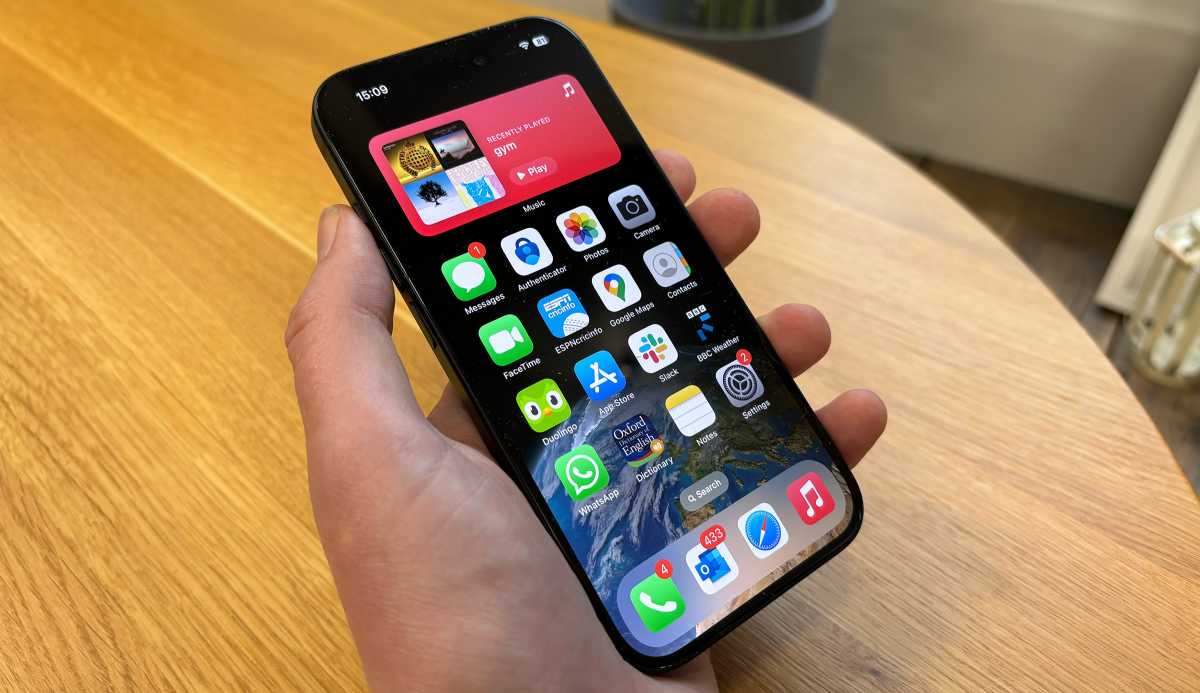
David Price / Foundry
In general, these are much more expensive than flip phones. At launch, the Samsung Galaxy Z Fold 5 cost $1,799.99/£1,748, the Google Pixel Fold was $1,799/£1,749 and the Honor Magic V2 £1,699.99/€1999.90. Prices will hopefully have gone down by the time Apple releases a foldable, although it will surely want to market it as an ultra-premium device.
Reputable analyst Ming-Chi Kuo estimates a launch price of $2,000–$2,500, aligning with Tim Long’s estimate of around $2,300 in the US, as seen in a private investment note by MacRumors.
That would make it nearly twice the price of the iPhone 16 Pro Max and more expensive than the Galaxy Z Fold 6, Honor Magic V3, or Oppo Find N5.
Kuo believes Apple will ship 3–5 million units in the first year, with a second-gen version expected to follow in 2027 and target up to 20 million units.
If Apple surprises us and releases a flip phone first, it might be roughly in line with the upcoming Samsung Galaxy Z Flip 7 and Motorola Razr 60 Ultra.
What type of device will the Apple foldable be?
Foldable iPad
Most rumours of an Apple foldable focus on it being an interpretation of the iPhone, but what if the company based it on the iPad instead?
That’s what research company CSS Insight said back in 2022 (via CNBC), although the suggested 2024 release date has long passed.
Its annual predictions report said that Apple would be keen to avoid any issues with a folding phone, so it would prefer to experiment with a folding iPad first, although there was no insight into what this folding iPad might look like.
CCS Insight’s Chief of Research Ben Wood said to CNBC that a foldable iPhone could risk cannibalising sales of the conventional iPhone, and that Apple would need to price the foldable iPhone at a minimum of $2,500 so that it clearly surpasses the top-end iPhone Pro Max model.
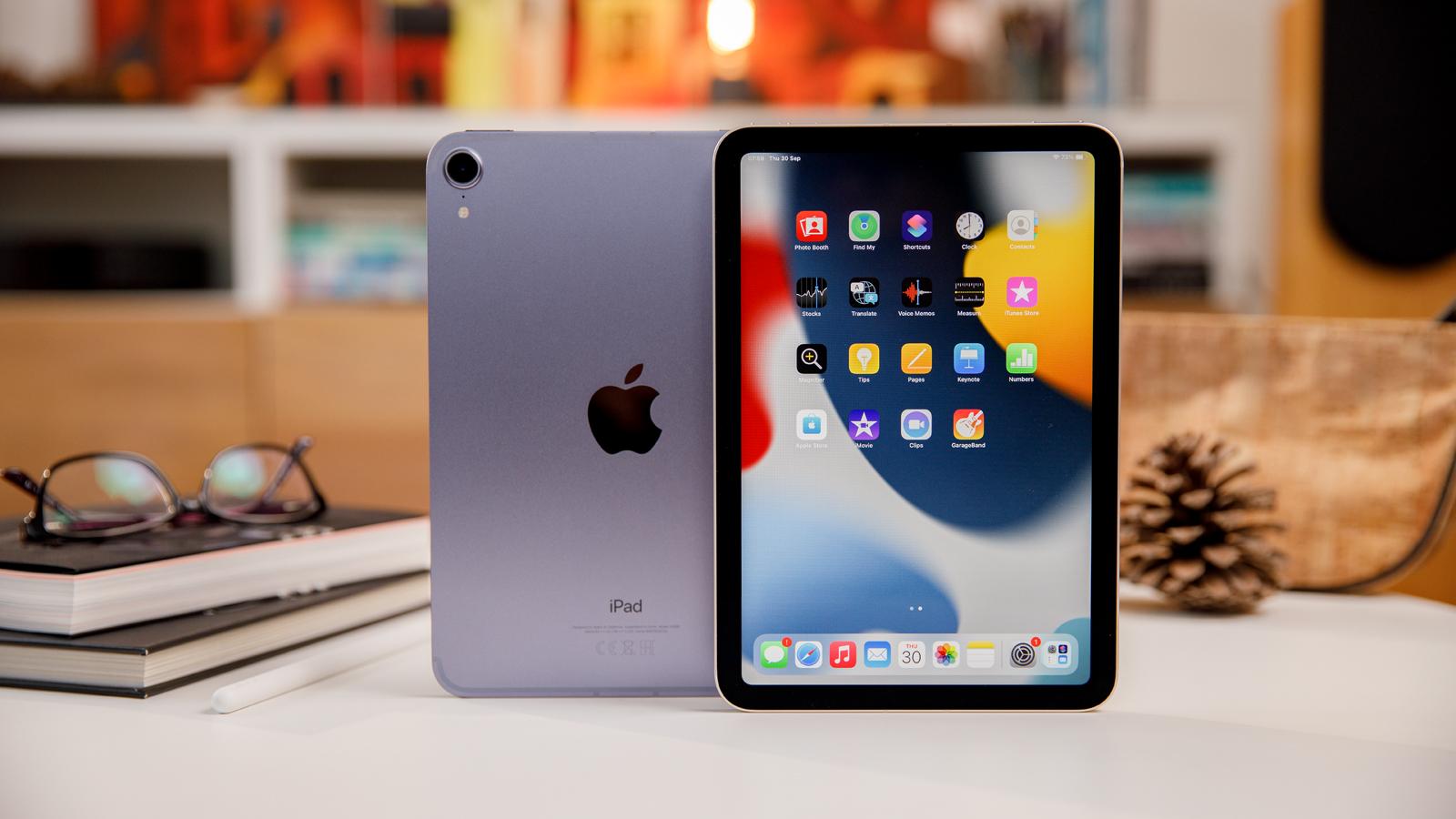
Dominik Tomaszewski / Foundry
In January 2023, Ming-Chi Kuo backed up that prediction, reporting on X (formerly Twitter) that there will be an “all-new design foldable iPad” launching in 2024 or 2025. The only detail he shared was that Anjie Technology will manufacture a carbon fibre kickstand for the tablet, which is intended to be lighter and more durable than current options.
Analysts from Omdia (via Revegnus on X) believe that the foldable device will be positioned within the iPad mini category. Omdia’s Senior Researcher Min-soo Kang also mentioned that the foldable iPhone will likely be similar in size to the Samsung Galaxy Z Fold 5, featuring a 7.6-inch main screen and a 6.2-inch cover display when folded.
A 2021 prediction from EqualOcean, a Canada-based investment research firm, also suggested that Apple was working on a single-display foldable that could resemble the iPad mini when unfolded.
The firm predicts that Apple will launch a foldable iPhone with a screen size of between 7.3 and 7.6 inches when unfolded, and that it’d be compatible with the Apple Pencil as well – much like the way that the latest Galaxy Z Fold phones support Samsung’s S Pen.
Competing analyst Ming-Chi Kuo detailed a possibly slightly larger 8-inch unfolded display in his May 2021 prediction. In fact, Kuo went a step further than simply mentioning size, suggesting it’ll have an 8-inch QHD+ flexible OLED display, and claiming that it’ll feature TPK’s silver nanowire touch solution used in the HomePod Mini “because of its several advantages over SDC’s Y-Octa technology”.
Kuo believes that the latter could create a “long-term competitive advantage” for Apple in the foldable market, as it’s the “superior” option for future devices that feature multiple folds, rollable form factors, and more.
More recently, newer tipster Digital Chat Station disagrees, revealing on Weibo that they expect the phone will feature a 5.49-inch outer screen and a 7.74-inch inner display. Ming-Chi Kuo corroborates this, suggesting a 5.5-inch outer display and a 7.8-inch OLED inner screen.
Elsewhere, Mark Gurman from Bloomberg has shared fresh details about Apple’s long-rumoured foldable device, suggesting that the company is working on a foldable iPad resembling two iPad Pros side-by-side when unfolded.
The device reportedly features a nearly seamless foldable display with a crease that is hardly noticeable. Gurman’s sources suggest that the screen could measure approximately 20 inches when fully unfolded, or 18.8 inches based on a leaked display roadmap. Digital Chat Station echoed this 18.8-inch screen size in a Weibo post.
Schematics linked to Apple patents reveal innovative hinge designs aimed at delivering an uninterrupted front display, contrasting with visible hinges on some competing devices.
Flip-style phone
In addition to the foldable iPad, Gurman has reported on Apple’s plans for a foldable iPhone. However, this product is not expected to debut until at least 2026.
On the other hand, DigiTimes reports that, unlike previous speculations about a foldable iPad, the company is now focused on a flip-style iPhone, similar to Samsung’s Galaxy Z Flip 6.
This shift in strategy reportedly stems from challenges in the Chinese smartphone market.
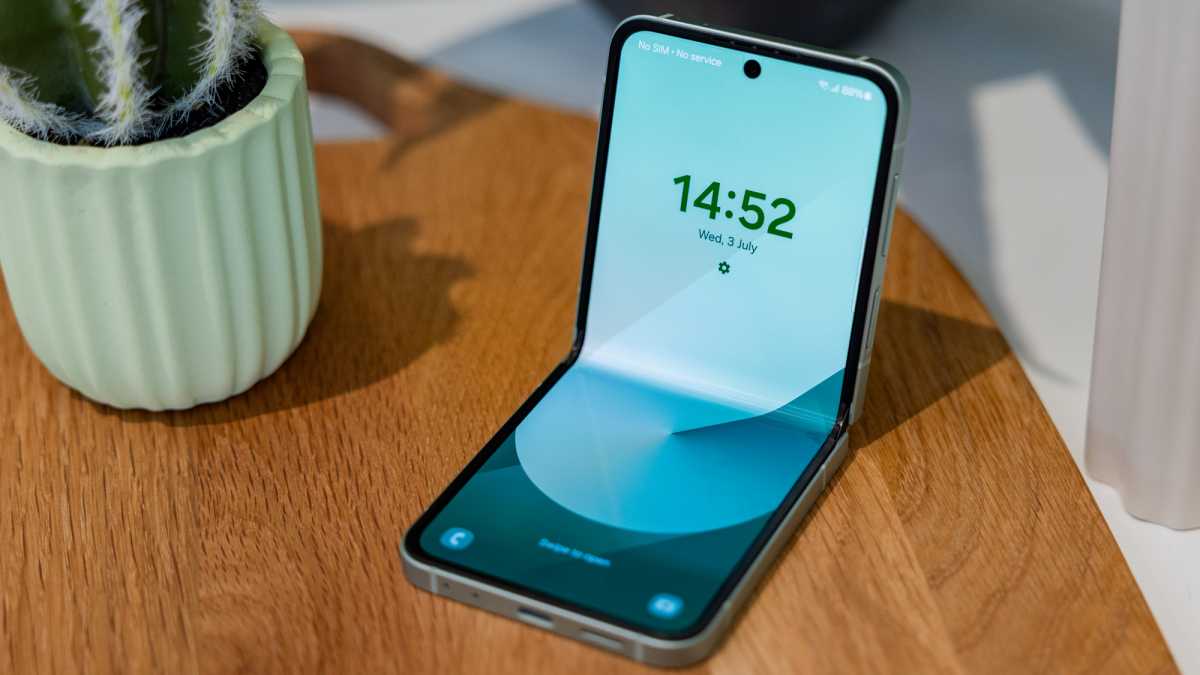
Dominik Tomaszewski / Foundry
The report also claims that Apple’s research and development phase for the device began this year, aligning with its typical two-year development cycle.
Samsung Display has been reportedly contracted to supply the folding screens as well, and the unfolded dimensions will resemble current iPhones in length and width, but not necessarily thickness.
Foldable MacBook
Meanwhile, the previous report from Apple analyst Ming-Chi Kuo (via GSMArena) indicated that Apple may actually release two foldable devices with Apple’s M5 series chip. These devices are expected to come in two sizes: 20.25 inches and 18.8 inches, which fold down to 14-15 inches and 13-14 inches respectively.
However, according to his post on X, Apple has delayed its first foldable device, now expected to be a foldable MacBook. The delay is attributed to technical challenges with the display and mechanical components.
Additionally, Apple has scrapped plans for a larger 20.25-inch model and the device is now expected to feature an 18.8-inch screen. LG is likely the sole supplier for the foldable panels, which, alongside the hinge, could result in a device priced around $3,500 due to high component costs.
Elsewhere, 9to5Mac also reports that Apple has been developing an iPad/MacBook hybrid device, which will have an 18.8-inch display when unfolded.
What will the Apple foldable look like?
While many assume that Apple would go down the same route as other popular book-style foldables – such as Galaxy Z Fold 6, Google Pixel 9 Pro Fold or OnePlus Open – producing a foldable iPhone that folds down the middle like a book, current rumours detail several different possibilities.
With issues around durability prevalent, the noticeable crease in foldable displays, and the overall quality of the finish, one of Apple’s prototypes might actually make more sense.

Jim Martin / Foundry
In a series of June 2020 posts, Jon Prosser suggested that the foldable iPhone may not be composed of a single flexible display. Instead, the leaker claims that one ‘foldable’ iPhone prototype is composed of two separate displays, connected by a central hinge – presumably a little like the Microsoft Surface Duo 2.
With all the issues surrounding durability and cost of flexible display tech, that could be a smart alternative.
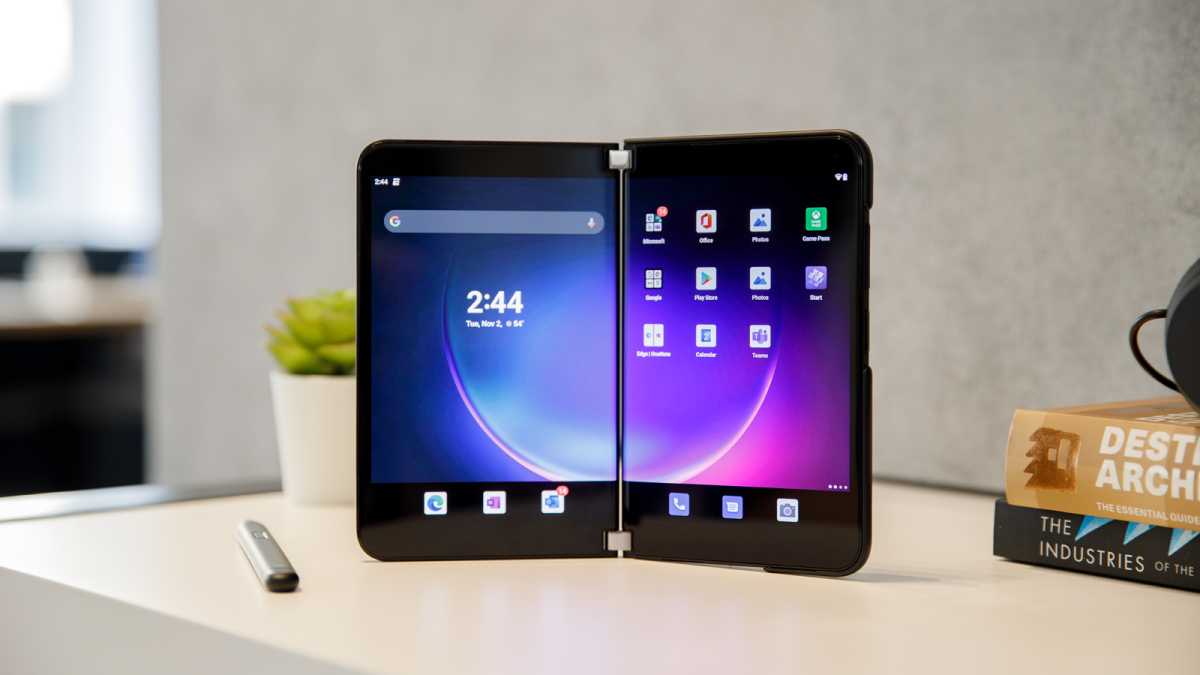
Dominik Tomaszewski / Foundry
However, a Bloomberg report from early 2021 suggests Apple has developed a prototype foldable display that, like the foldables from Samsung and co., has an invisible hinge, a step away from the two-display design detailed by Prosser in 2020.
This was reiterated in a February 2021 video from Prosser, who seemingly no longer thinks that Apple is going down the dual-display route, now suggesting that Apple is keen to develop something akin to Samsung’s Galaxy Z Flip clamshell form factor.
The leaker didn’t go into much more detail other than suggesting that the company is considering “fun colours” for the foldable iPhone, but it’s likely way too early on for Apple to make final decisions on colour schemes.

Dominik Tomaszewski / Foundry

Foundry
Whatever the final form factor, industry sources previously suggested that LG is working with Apple on a prototype display for the foldable. Now, DigiTimes reports that Apple has chosen Lens Technology as the primary supplier of ultra-thin glass (UTG) for the foldable iPhone, securing around 70% of orders. The raw materials will likely come from Corning.
Apple reportedly prefers a design that thins only the central part of the UTG, boosting durability. Lens Technology’s strength in glass etching and post-cutting durability has positioned it well for this role.
Samsung Display is expected to supply the flexible OLED panels that sit beneath the display’s surface.
Interestingly, in a May 2022 tweet, Kuo suggested that Apple is testing supplier E Ink’s Electronic Paper Display, otherwise known as EDP, for a “future foldable device’s cover screen & tablet-like applications”.
Kuo suggested that the colour EPD produced by E Ink “has the potential to become a mainstream solution for foldable devices” and the cover/second screen in particular, thanks to its power-saving prowess. This seems unlikely, but it is still interesting to consider.
Patents
In December 2024, we reported that Apple had patented what could be the iPhone Fold’s hinge. Titled “Hinges for folding display devices,” this patent outlines a system of interconnected links made from interlinked “fingers” and a friction clutch.
A distinctive feature is the use of crescent-shaped slots, allowing each link to rotate relative to others. This design shifts the axis of rotation outside the link itself, which is critical for achieving the intended functionality.
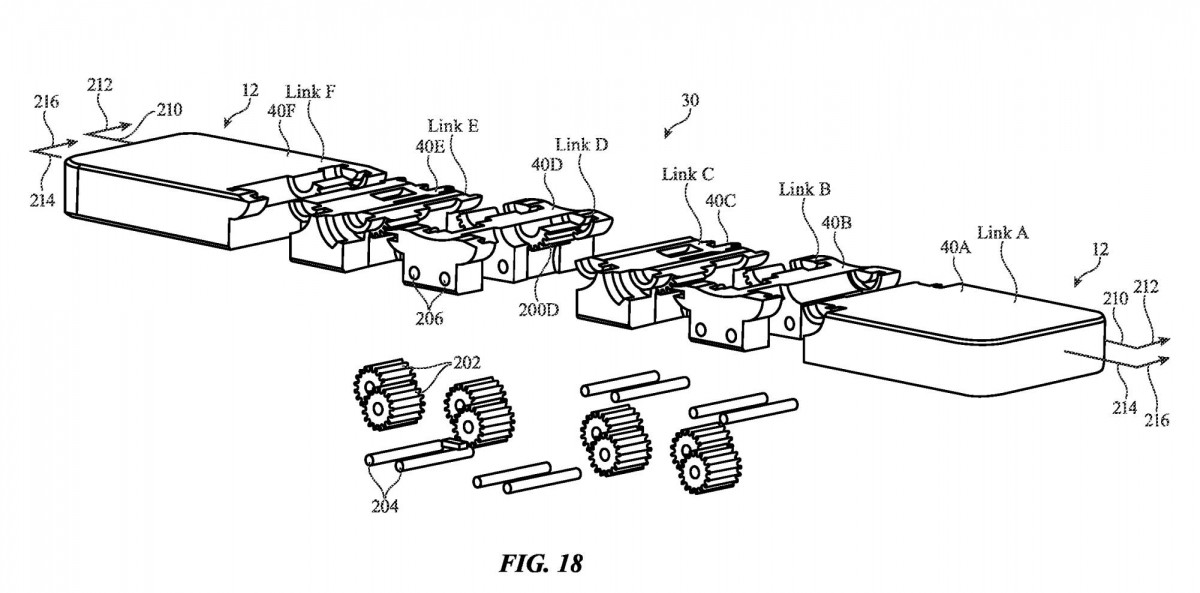
USPTO
The patent’s scope is intentionally broad, suggesting applications for phones, tablets, laptops, watches, and other wearable devices.
However, it remains uncertain whether this hinge represents an improvement on earlier designs or if it will serve as a complementary option for different types of devices.

USPTO
The hinge mechanism utilises fingers, pins, and gears to create a compact clutch that provides controlled friction, enabling the hinge to maintain the device at a chosen angle.
Additionally, the gears ensure both sides of the hinge rotate symmetrically.
Elsewhere, Jon Prosser’s seemingly outlandish claims of a dual-screen iPhone were backed up less than a day later by an another Apple patent discovered by Patently Apple. The patent describes a device consisting of two separate panels, connected together by a fabric hinge system.
It’s not the first patent to describe a foldable iPhone though. A separate patent for a “flexible display device” was filed back in 2018, and was a continuation of patents filed in 2016, 2014 and 2011. There’s also a separate 2016 patent that describes “an electronic device, comprising: a housing that bends about a bend axis; and a display in the housing that bends about the bend axis”.
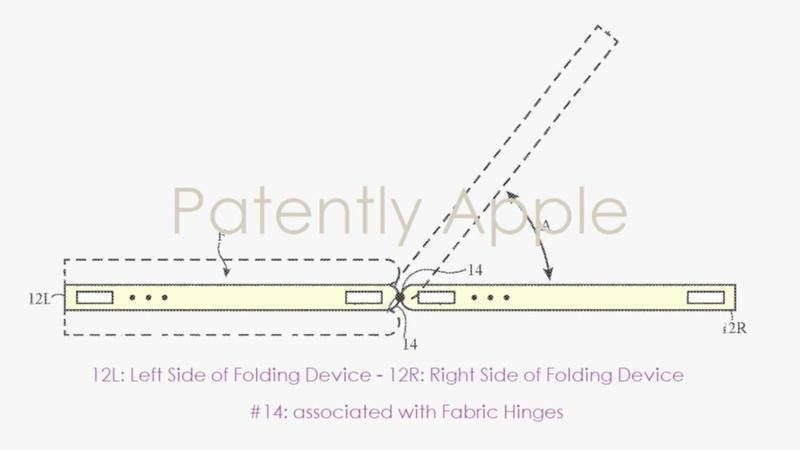
There’s also an interesting patent, filed in 2018, that outlines a tri-folding foldable smartphone that folds in different directions, unlike current foldables. Per the patent filing, the double folding screen can be bent backwards or folded inward from either end, giving the user the freedom to use the foldable any way they like.
It could also allow Apple to produce a smartphone-sized foldable that folds out to something the size of an iPad, and it sounds a lot like the futuristic tablets used in Westworld too. An interesting concept, then.
Oh, and let’s not forget about the patent Apple filed outlining a method to avoid damaging displays when they’re bent. The patent for “Electronic Devices With Flexible Displays” suggests that damage is likely in cold conditions, and offers this viable solution – “the portion of the display that overlaps the bend axis may be self-heated by illuminating pixels”.
Another Patently Apple discovery showcases a novel concept where the crease doesn’t run down the centre of the display but leaves a portion exposed when the device is folded, which is thought to serve as a secondary display or sorts for notifications and the like, similar to the Galaxy Z Flip’s external screen.
Apple has also filed patents detailing ways to get around the issue of creasing foldable displays. One such patent describes a system that allows the display to bow instead of fold to reduce the amount of stress on the panel itself, and it’s not dissimilar to the system found in the Galaxy Z Flip and Motorola Razr.
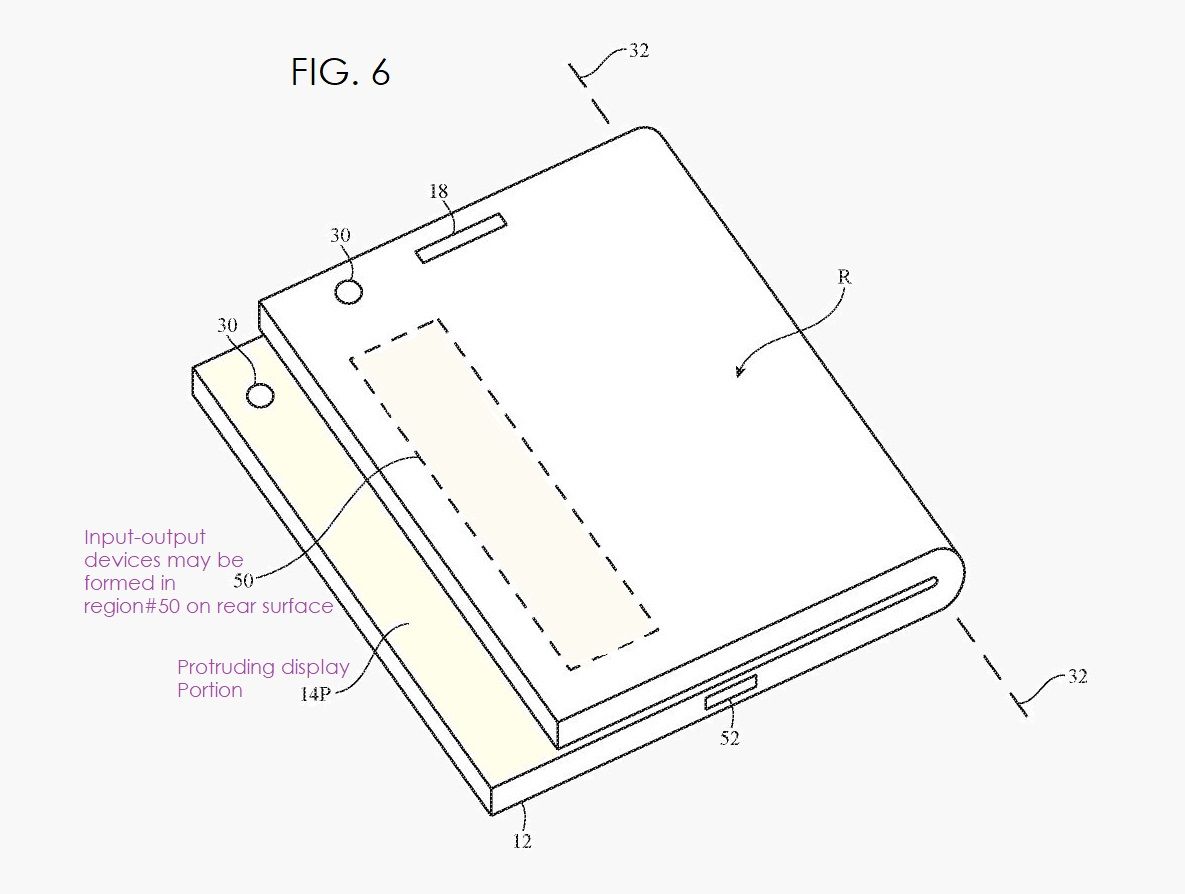
A July 2021 patent, titled “Electronic devices with adjustable display windows” details an expandable display that has the ability to cover the camera unit (and likely other Face ID components) when not in use. While it’s not specifically for a foldable iPhone, the concept of an expandable display isn’t far from what Android rivals are using to combat the crease present on most current foldables.
Another patent gives us yet more details on what to expect from the foldable. The patent, entitled “Electonic devices with fiber composite friction hinges” gives us a look at a hinge that’s slim but doesn’t compromise on strength.
While the tech could arguably be used on a laptop, the patent specifically mentions foldable displays. The patent description notes that “the electronic device may have a flexible layer such as a flexible display that overlaps the hinge structure”.
One of the most curious patents concerns Apple’s attempts to create a phone with no buttons at all. The patent includes an illustration of how it could also be achieved with a foldable device, referring to how what it calls ‘sidewalls’ can be made from glass or other transparent materials but include touch and pressure-sensitive components under display elements.
Of course, it’s worth saying that Apple, like most tech companies, files patents all the time, and this isn’t necessarily indicative of what we’ll see on an upcoming iPhone or iPad, but it gives us a good idea of the avenues that Apple is considering.
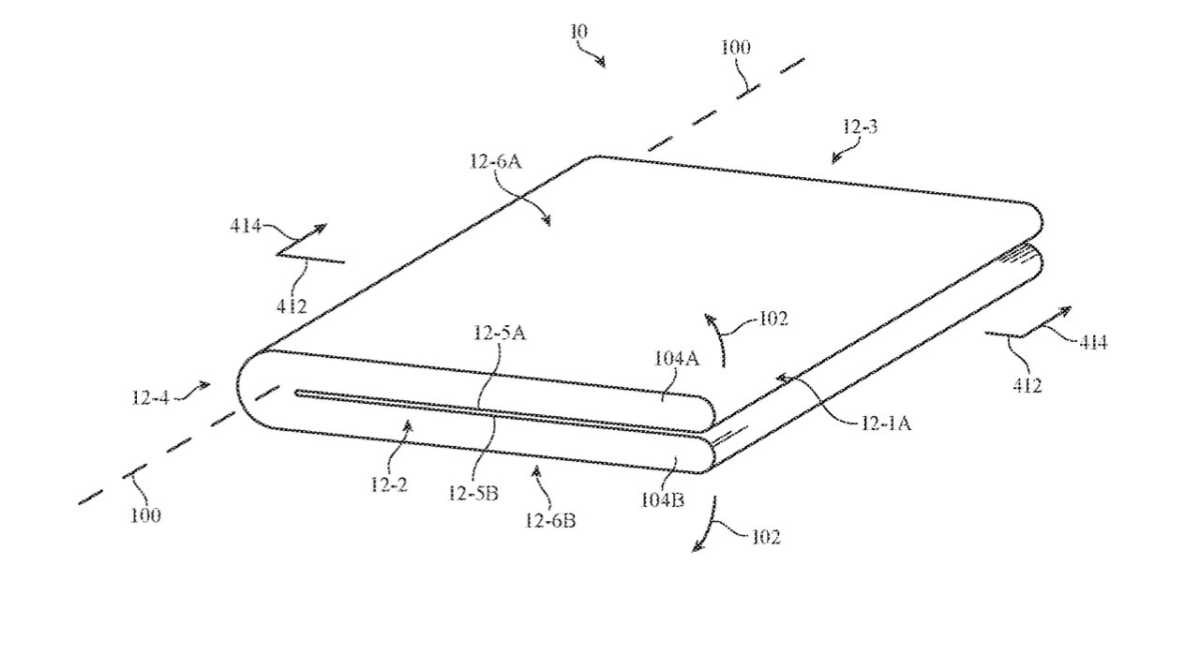
United States Patent and Trademark Office
This is all we know at this point about a possible foldable device from Apple.
Apple’s slow and steady approach means the foldable iPhone will be one of the last devices of its kind to come to market. But Apple fans will hope it’s worth the wait.
If it comes out in the near future, it will certainly compete with successors to popular current options such as the Galaxy Z Fold 6 and Z Flip 6, the Motorola Razr 50 Ultra and the Google Pixel 9 Pro Fold.
If you don’t want to wait, be sure to check out what we currently consider to be the best foldable phones in 2025.














